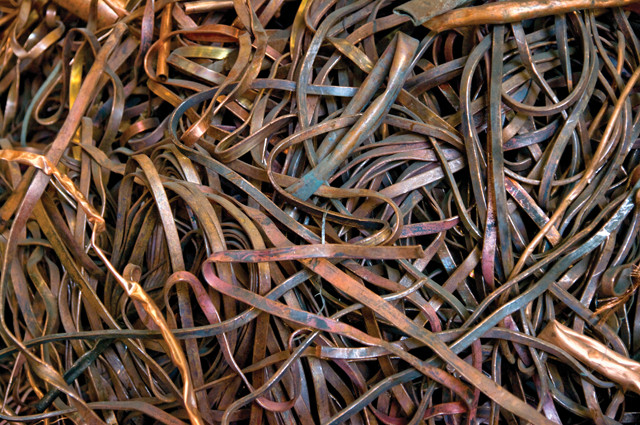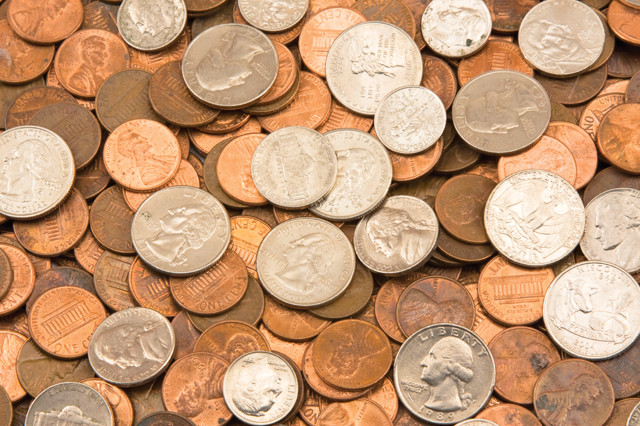
by U.S. Geological Survey Thursday, June 14, 2018
Daniel Edelstein, the copper commodity specialist for the U.S. Geological Survey, compiled the following information about copper, a metal closely tied to the development of ancient and modern civilization.

The United States is a major supplier of copper scrap to the rest of the world. Credit: ©iStockphoto.com/Huguette Roe
Copper, the “red metal,” was the first metal used by humans more than 10,000 years ago; it was one of the most important materials in the development of civilization. The alloying of copper with tin to form bronze, a harder, stronger and more readily cast metal, gave rise to the Bronze Age. Copper continues to be important today. It is the third-most-used metal in the world, and new uses for it continue to be developed.
Copper continues to be a major industrial metal because of its relatively low cost, availability and excellent electrical conductivity (second only to silver), and because of its high ductility and thermal conductivity, malleability and corrosion resistance. Currently, more than 70 percent of copper is used in electric and electronic applications throughout all sectors of the economy, and it is ubiquitous in our lives through use in the generation and distribution of electricity and the circuitry of electronics.
New uses for copper include silicon-based computer chips, solar and wind power generation, superconducting cables for the electric grid, antimicrobial touch surfaces and rotors in energy-efficient motors. It’s also important for coinage, hardware and roofing.

Pennies are only about 2.5 percent copper. Dimes, quarters and half dollars contain about 91.7 percent copper. Credit: ©iStockphoto.com/Keith Webber Jr.
The United States became the leading global producer of mined copper in 1883 and retained that distinction for almost a century until 1982, when it relinquished that position to Chile. Though at least 160 copper minerals have been identified, chalcopyrite is the most abundant and economically significant. Froth flotation and large-scale open-pit methods introduced during the first decade of the 20th century revolutionized copper mining, greatly expanded copper reserves and provided the copper necessary to fuel electrification of the United States. Further advances in the 1980s expanded copper reserves by allowing for the economical processing of low-grade oxide mineral resources.
Because of its infinite recyclability and the economic advantage of processing secondary materials over mined ore, copper scrap has always been a significant resource. Although the United States is a net importer of refined copper, it is a major supplier of copper scrap to the rest of the world. The relatively high copper prices that have prevailed during the latter half of this decade have led to increasing theft of copper products. Despite efforts by industry and government (legislation and enforcement) to intercede, the difficulty in distinguishing legitimate scrap from purloined material may have encouraged theft of copper products with, in the case of high-voltage cables, sometimes tragic results.
Visit minerals.usgs.gov/minerals for more information on copper.
Copper production and consumption:
In 2009, the United States accounted for about 8 percent of world mine production of 15.9 million metric tons and ranked third in production behind Chile (34 percent) and Peru (8 percent, but just a bit above the United States).
World refined copper production totaled about 18.4 million metric tons in 2009, of which about 2.9 million metric tons was produced from copper scrap. China was the leading producer (22 percent), followed by Chile (18 percent), Japan (8 percent) and the United States (6 percent).
The United States was the world’s leading consumer of refined copper until 2002, when it was surpassed by China, whose apparent consumption has increased nearly five-fold since 1999.
In 2009, China and the United States, the two leading consumers, accounted for 39 percent and 9 percent, respectively, of world refined copper consumption.
Fun facts:
The U.S. penny contains only 2.5 percent copper as a plating over a zinc core, whereas the dime, quarter and half dollar contain 91.7 percent copper and have a pure copper core sandwiched between copper-nickel skins. The gold-colored Presidential Dollar contains 88.5 percent copper.
In the late 18th century, the Royal British Navy set out to clad the bottom of its ships with copper sheet to prevent biofouling (the accumulation of fungus, algae, microorganisms, plants and animals on wet structures). Copper sheeting and copper-bearing paints are still used for the same purpose.
Copper is an essential micronutrient that plays a vital part in the development and performance of the nervous and cardiovascular systems, as well as the skin, bone, immune and reproductive systems. It is also necessary for gene transcription.
Paul Revere, better known as a patriot and master silversmith, opened a foundry after the Revolutionary War that was a leading producer of bronze church bells. In 1801, he founded the still-operating Revere Copper Company, which opened the first copper rolling mill in North America. Its products were used to sheath the hulls of U.S. Navy ships and the wooden dome of the Massachusetts State House.
© 2008-2021. All rights reserved. Any copying, redistribution or retransmission of any of the contents of this service without the expressed written permission of the American Geosciences Institute is expressly prohibited. Click here for all copyright requests.